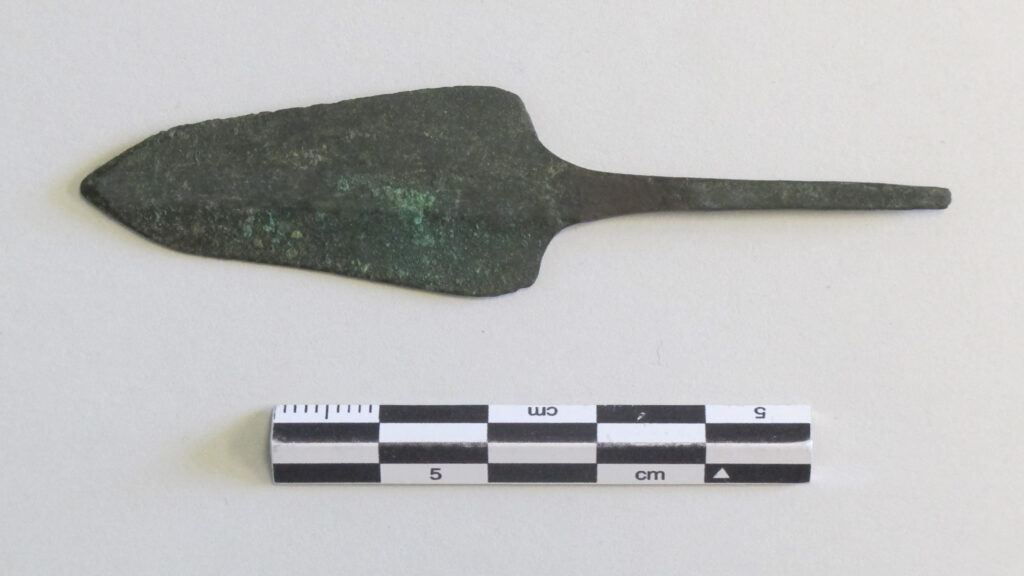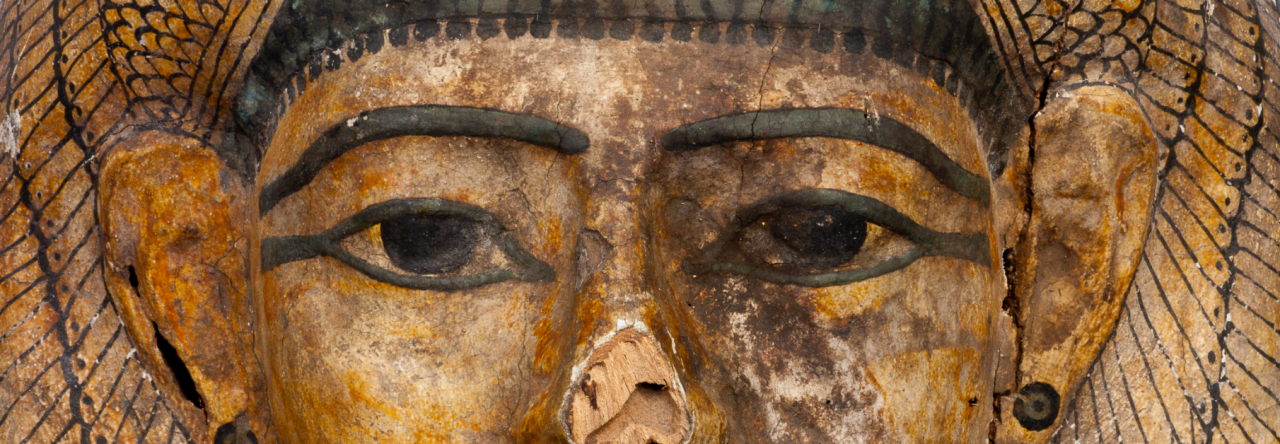
Flat Bladed Arrowhead
AWG0000.03.03
Northwest Iranian
Material: Bronze
Weight: 9g
Dimensions: 8.2 cm total length ( blade 4.4 cm; tang 3.8 cm); 0.2 cm thick
Condition: Good
Provenance: Unknown
Source/donor: Stuart L. Wheeler
Date of acquisition: Prior to 1990 (matches description for “arrow point” included on 1990 list entitled “Pieces on loan from the collection of Stuart L. Wheeler”)
Research by: Danny Saravia Romero, ’23
Detailed description of form/shape:
Flat triangular (deltoid) blade, with low squared midrib and a long four-sided (rectangular) tang.
Comparanda:
Arrowheads of similar shape and style in the Ashmolean Museum, Oxford, are identified as West Persian (Moorey, nos. 64-68; for 64, see the online collection, AN1951.144).
For the length of the tang (though the blade is not as flat), compare the arrowhead from Luristan (northwestern Iran) in the University of Pennsylvania Museum, Object 32-41-202. For a closer blade shape also from Luristan see Penn Object 43-29-66.
Discussion:
With a flat, deltoid blade and long, squared tang that would have been inserted in a wooden shaft, this small arrowhead was designed for lightweight, all-purpose use. Arrowheads of similar shape and style can be found widely across Western Persia in the late second and early first millennium BCE (Moorey 84), especially in tombs dated to Iron Age III (circa 800-600 BCE) (Overlaet). The old label for this item states that the object is a “Mycenaean Spear Point”; however, based on the size, shape, and comparanda mentioned above, it seems more likely that it is from Iran. This identification would also match an older inventory list, which calls it simply an “arrow point.” Like the Leaf Bladed Arrowhead, it would make most sense if this object was acquired alongside the Luristan Bronze dagger from Iran because of the object’s date of entry into the collection. Nearly all bronze artifacts from the northwestern “Luristan” region of Iran were excavated from tombs. Bronze weapons included in tombs could signify not only the military skills of the deceased but also their elite social status.
Bibliography:
Moorey, P.R.S. 1971. Catalogue of the ancient Persian bronzes in the Ashmolean Museum. Oxford: Clarendon Press.
Overlaet, Bruno. 2005. “The Chronology of the Iron Age in the Pusht-i Kuh, Luristan.” Iranica Antiqua XL:1–33.
Penn Museum. “Arrowhead, Object 32-41-202.” https://www.penn.museum/collections/object/52272
Penn Museum. “Arrowhead, Object 43-29-66.” https://www.penn.museum/collections/object/107507
